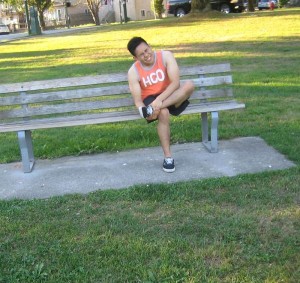Big toe pain that develops from running is likely due to hallux rigidus. The condition is a form of arthritis that can put a stop to training or in serious cases, permanently end running. Recognizing the condition early is vital so that proper treatment can be started and the individual can steadily resume running.
Close look on hallux rigidus
This is a form of arthritis brought about by wearing out of the cartilage that rests amidst the proximal phalanx bone at the base of the big toe and the first metatarsal bone in the forefoot.
When the foot is flexed, friction produced between the 2 bones gradually reduces the range of motion of the toe. The condition typically develops between the ages of 30-60 years of age but it is unknown why some develop the condition and others do not.

What are the causes?
The big toe pain caused by hallux rigidus among runners usually starts with the biomechanics of the foot. Individuals who are flat-footed or overpronate are prone to the injury.
Overtraining is also another cause of hallux rigidus. Other possible causes include stubbing the toe, structural irregularities in the bone structure of the foot and gout. Additionally, genetics also has a role in the start of the condition.
What are the indications?
During the initial stages, the symptoms might include reduced mobility of the joint at the base of the big toe. Rigidity of the joint during movement as well as big toe pain and minor swelling might arise as well.
Once the injury progresses, the symptoms become serious and might include pain even while at rest, bone spurs, limping and discomfort in other parts of the body such as the hips and knees.
How to deal with big toe pain
The treatment for the big toe pain from hallux rigidus generally starts with the footwear used. Wearing shoes that have a wide toe box lessens the pressure and friction on the base of the toe.
Shoes that have a stiff sole are also suggested. Other conservative measures include non-steroidal anti-inflammatory drugs (NSAIDs), physical therapy, orthotic inserts and corticosteroid injections for the swelling and pain.
